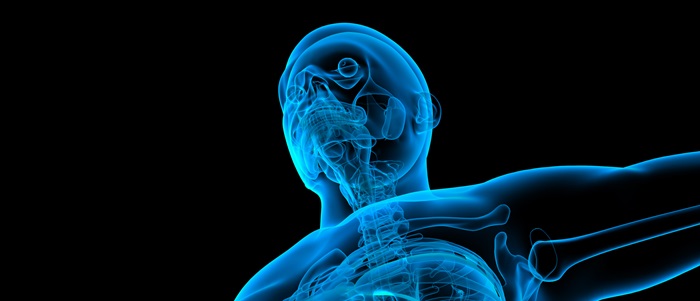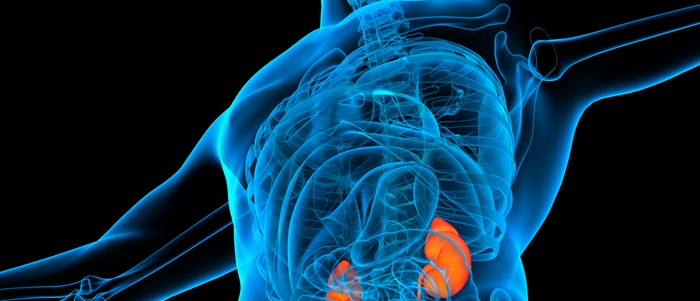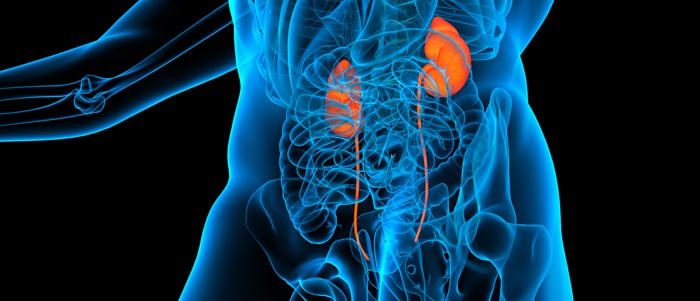Most people have probably heard about gene therapy, stem cell therapy and precision medicine. But how far have we come? Here, we provide a status of what biotechnology can do for patients today – and in 20 years.
A 67-year-old British man steps out of his front door. It is freezing cold, and he shivers. The man – let’s call him John – just took his daily dosage of medicine to keep his type-2 diabetes and high blood pressure under control. Suddenly his foot slips on the icy tiles, and John falls heavily to the ground. An ambulance is called, and at the hospital, the doctors found that his hip had several complicated fractures. A blood sample also by accident reveals that John is suffering from a certain kind of leukemia (CML). Let’s have a look at how biotechnology can help John.
Today: Bones are difficult to build
"In 20 years, it will be possible to 3D-print damaged bone and tissue structures, so they fit the patient’s specific defects"
Professor at KAIST and Scientific Director at DTU Biosustain
If this incident happened today, John would need bone transplantation from another place in the body to fix the hip. The transplantation presents a risk of infection and can cause scars where the doctors took the healthy bone mass from. However, in 20 years the doctors will most likely be able to create the bone mass in the laboratory and build a new piece of 3D bone structure that fits perfectly into the fracture. The artificial piece of hip will be “lined” with cells that quickly develop into new veins to provide the hip with oxygen and nutrients.
“In 20 years, it will be possible to 3D-print damaged bone and tissue structures, so they fit the patient’s specific defects. In this way we can do long‐term repair and regeneration of several types of injured or diseased tissues and organs,” says Sang Yup Lee, Co-author of the article and Professor at Korea Advanced Institute of Science & Technology (KAIST) and Scientific Director at The Novo Nordisk Foundation Center for Biosustainability at DTU (DTU Biosustain).
Artificial bone mass is only one example of how biotechnology can improve the treatment of patients in the future, according to the group of scientists and doctors. The experts gave this overview in a review article that was published in Biotechnology Journal and discussed at the World Economic Forum in Davos, 2018. The main authors of the article are Dr. Elisabeth O’Day, CEO, and Founder of Olaris Therapeutics and Dr. Sang Yup Lee.

Precision medicine
Today: Precision medicine developed for patients with blood- and breast cancer
Most of today’s medicine is based on the philosophy “one size fits all”. Studies indicate that 30-40 percent of all patients receive ineffective drugs, where the side effects exceed the drugs’ very limited positive effects. For example, men and women’s bodies react very differently to specific types of medicine. The same goes for different ethnic groups.
Even though there is still a long way to go when it comes to developing precision medicine, some tailored cancer medicines targeting specific mutations have already lowered the mortality rates for some types of cancer significantly. For instance, 15-20 percent of all cases of leukemia in adults are caused by a genetic disorder (fusion of the two genes called BCR-ABL). Only six percent of adults survived this type of leukemia (CML) in 1975. But due to the precision medicine Imatinib, the number is today 90 percent.
Similar targeted therapies have increased the survival rate for specific types of breast cancer, lung cancer, and colon cancer. For instance, breast cancer was previously seen as one type of cancer. Today, this cancer is divided into four to six subtypes and the treatment targets the specific subtype.
These breakthroughs have been achieved because scientists have discovered the genetic defects underlying these cancer types, thus, they can develop medicine targeting the cancer’s ‘weak spot’. Precision medicine can, thus, cure John’s leukemia. Unfortunately, it is not yet possible to cure John’s high blood pressure, but this will most probably change in the future as more genetic targets are found.

In 20 years: Personal biomarkers reveal signs of disease
Precision medicine and so-called biomarkers will be gaining increased attention at the hospitals. Biomarkers can include molecules that tell doctors about the blood sugar level (glucose) or specific blood proteins that reveal diabetes or heart disease in its early phases.
“Personal medicine is preventive in its core. Currently, we are waiting until our health weakens before we diagnose and treat patients. Personal medicine has the potential to change that. In 20 years, the patient will be able to monitor his or her health via different biomarkers,“ says Elizabeth O’Day, who is the first author of the article.
However, experts emphasize that there are many ethical and legal considerations when accessing a patient’s genetical data. For example, it could lead to insurance companies taking advantage of the data and denying selling insurances to people with a higher risk of developing a certain disease.
Gene therapy
Today: Gene therapy helps to better understand diseases
Gene therapy is still in its very early phase and is mostly used to study diseases such as hemophilia, cystic fibrosis, autoimmune diseases and cancer for developing new treatment methods and therapeutics. But thanks to a rather new technology called CRISPR, gene therapy will now gather speed.
This is done by, for instance, deleting the function of certain genes in mice and observing how the animals respond to this and whether a pharmaceutical drug can be used for curing the disease. Today, patients like John will not benefit from the CRISPR technology, but scientists use CRISPR-Cas9 in the development of medicine for high blood pressure and cardiovascular diseases and for producing new antibiotics that can cope with resistant bacteria.
In 20 years: Gene therapy prevents high blood pressure
Applying gene therapy to patients such as John will perhaps make it possible to “turn off” specific genes in his genome, e.g. the gene PCSK9. By turning off the function of this gene, John’s high blood pressure will most likely be normalized and he will also have a lower risk of developing cardiovascular disease.
Nevertheless, experts find that certain security procedures related to gene therapy have to be taken into consideration. Cas9, the scissor that cuts the DNA where the CRISPR-protein binds, has a potential risk of cutting at other places – off targets. This can shift the reading frame for the entire genome, which would be very dangerous. This corresponds to a change of reading frame in a book, so that a sentence “can you run?” is now “ca nyo uru n?”.
Even bigger considerations have to be made when it comes to gene manipulation in human germline cells, because the changes in the genes could also have an impact on the next generations.

Stem cell therapy
Today: Stem cells help leukemia patients
Stem cells are immature cells that can be programmed into all cell types such as skin cells, kidney cells, liver cells or cornea cells. The last 50 years, stem cell therapy has mostly been used to prevent harmful side effects after chemotherapy for patients with leukemia. This is done by bone marrow transplantation from a donor as a replacement for the patients’ destroyed marrow. In this way, the patient will be able to produce healthy white blood cells.
John can, therefore, most likely be cured of his leukemia with stem cells and with Imatinib. Even though many stem cell therapies are today undergoing clinical trials, and despite many promising trials, these methods still lack approval from the health authorities in the US, FDA, and in Europe.
In 20 years: Type2-diabetes cured by stem cells
20 years from now, the doctors will most likely be able to grow stem cells and program them to be insulin-producing beta cells that are normally found in the pancreas. With unlimited access to these cells in test tubes, the functioning beta cells can be transplanted into the patient and make the patients ‘vulnerable’ to insulin again.
Insulin opens the cells to allow the blood sugar to pass, thus, the patient is cured of his or her type-2 diabetes. The same trick could repair John’s broken bones as stem cells in a matrix could be programmed to produce the minerals that are important in creating bones.
Already now, scientists study salamanders to discover how to repair and regenerate bone structures as these animals are capable of ‘regrowing’ limbs. So, hopefully, mimicking nature and using biotechnology wisely will improve the life of John and other ‘biotech patients’ in only 20 years from now.